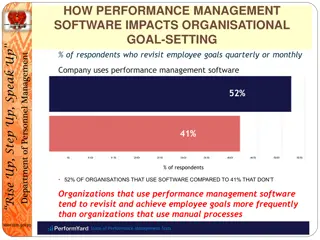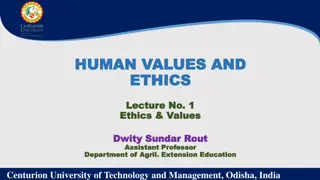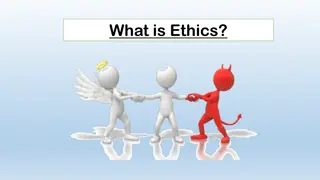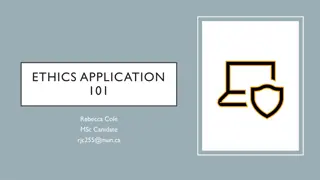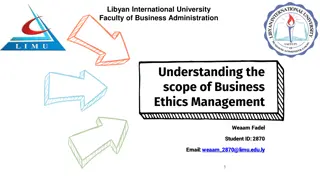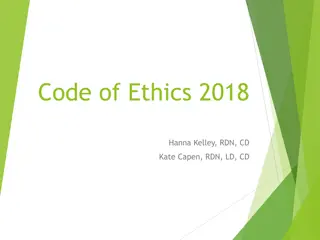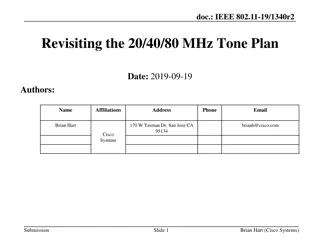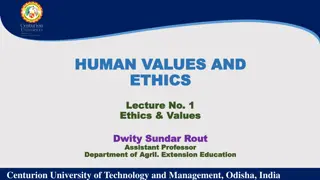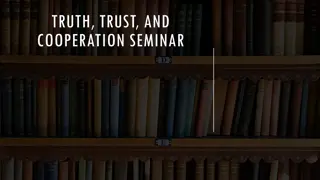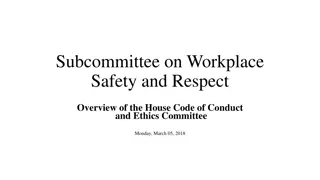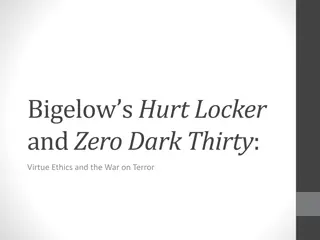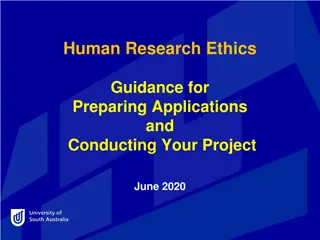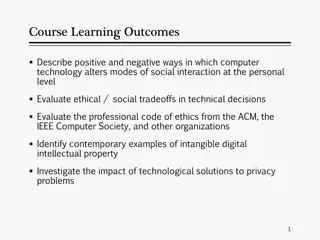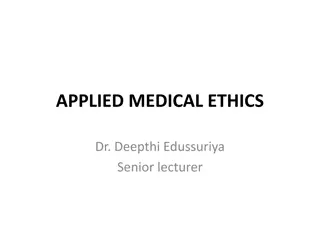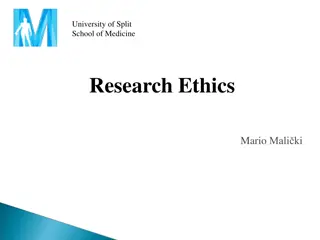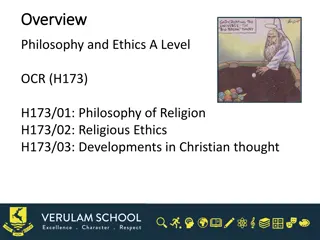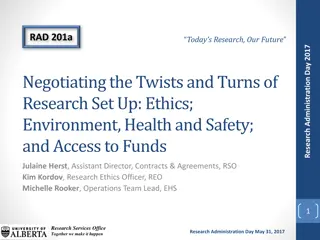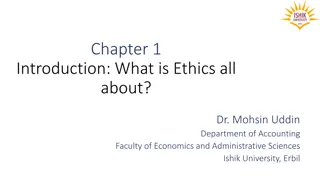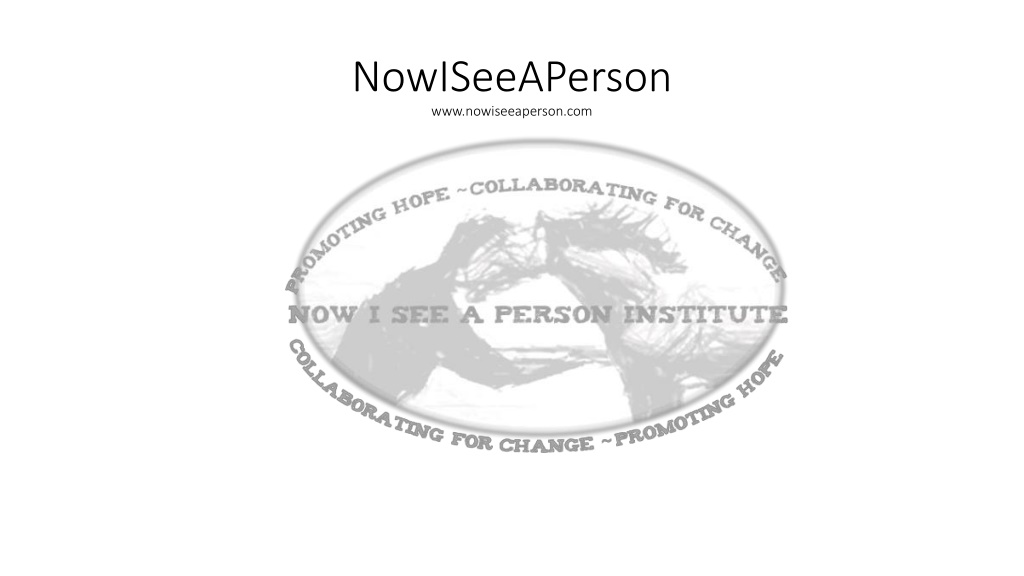
Co-Creating Intimacy in Client-Therapist Relationships
Exploring the importance of process ethics in therapy, focusing on relational connection, full presence, and sacred conversations. Understand how therapists can unintentionally hinder clients' healing and growth, emphasizing the need for genuine listening and collaboration. Learn about the transformative power of therapy in guiding individuals through their thoughts and emotions, emphasizing the humanity and equal footing of both clients and therapists.
Download Presentation

Please find below an Image/Link to download the presentation.
The content on the website is provided AS IS for your information and personal use only. It may not be sold, licensed, or shared on other websites without obtaining consent from the author. If you encounter any issues during the download, it is possible that the publisher has removed the file from their server.
You are allowed to download the files provided on this website for personal or commercial use, subject to the condition that they are used lawfully. All files are the property of their respective owners.
The content on the website is provided AS IS for your information and personal use only. It may not be sold, licensed, or shared on other websites without obtaining consent from the author.
E N D
Presentation Transcript
NowISeeAPerson www.nowiseeaperson.com
Revisiting Process Ethics: Participating and Co-Creating Intimacy in Client- Therapist Relationships An Introduction and Look after Twenty Years From 1983 I had the pleasure of working within a learning community at the Houston Galveston Institute. I recall first meeting Harry Goolishian since Harlene Anderson was on sabbatical, As a young twenty something I embraced the thoughts that continue, today, with our efforts at Now I See A Person Institute. These include all clients can transform and heal and if that if this is not occurring then the therapist may be blinded by their own prejudices. These may unintentionally include not able to genuinely listen, unable to understand or begin to understand what the person they are trying to help is doing, thinking, or wants to do and think, not approving of the person they are attempting to listen to, trying too hard to solve problems without the lead and collaboration of the person or people suffering, and not obtaining success in the intimacy of the therapeutic relationship through process ethics. Within Process Ethics, relational connection, full presence and sacred conversations, clients have innate strengths to be able to resolve and transcend extreme pain and symptoms and it is the role of the therapist to not get in the way of this and with all good intentions, accidently, contribute to a person experiencing a worsening of symptoms to varying severe degrees and consequences.
People (psychologist/therapist, etc.) need to realize that People (psychologist/therapist, etc.) need to realize that everybody is human and nobody is better than the everybody is human and nobody is better than the Therapy is supposed to guide people within their own thoughts not to Therapy is supposed to guide people within their own thoughts not to next...some may be a little more confused...some may be next...some may be a little more confused...some may be change our thoughts or make us think we are inadequate because of our change our thoughts or make us think we are inadequate because of our stressed, some may need guidance. Some may be stressed, some may need guidance. Some may be histories. Therapy helps us to categorize our concerns so we can be the histories. Therapy helps us to categorize our concerns so we can be the overwhelmed at times and some people just simply need to overwhelmed at times and some people just simply need to one to see and do the options. I do not want to learn some Band one to see and do the options. I do not want to learn some Band- -Aid Aid verbalize to somebody who has time to listen and who verbalize to somebody who has time to listen and who techniques or be criticized and all my characteristics placed under a techniques or be criticized and all my characteristics placed under a cares. When I was suicidal and doing drugs I never felt I had cares. When I was suicidal and doing drugs I never felt I had microscope or to be scared because someone (a therapist) is telling me I microscope or to be scared because someone (a therapist) is telling me I to hide these from you and I didn t fear you would label me to hide these from you and I didn t fear you would label me am worse off than I knew I was. (Transcript from a client on ethics in am worse off than I knew I was. (Transcript from a client on ethics in like my school counselor. That counselor scared me. I just like my school counselor. That counselor scared me. I just therapy, Swim, 2003, p. 4). therapy, Swim, 2003, p. 4). wanted to change and quit hurting. (Transcript from a client wanted to change and quit hurting. (Transcript from a client on process ethics, Swim, 2003, p. 4). on process ethics, Swim, 2003, p. 4).
Re-visiting Process Ethics What happens when people seeking support are viewed as normal human beings who are going through difficult times? When we honestly care about others and genuinely invest the time to attempt to understand the hardships they face? When we embrace the idea that people can get over mental illness and invite others within a person s community to join in the acknowledgement of a person s strengths and capacity to heal? What if these happen at a park, a horse ranch or in someone's home? Process Ethics Research 2021
Revisiting Process Ethics: Participating and Co-Creating Intimacy in Client-Therapist Relationships In 2001, I asked Ken, Harlene, Tom, Sally, Dan, Faith and Giselle to accompany me in writing on Process Ethics (Journal of Systemic Therapies 2001). Now I See A Person Institute was created on these premises of Ethically Generated Relationships . Every conversation whether at the ranch or via zoom, due to the pandemic, celebrates honesty, genuine caring, seeing a person rather than a diagnosis, trust, humility, and humanness. Our clients see us as people as we do them. People come to be with us, a team of therapists, hopeless and suffering and we meet them in a space of genuine caring, pure listening, attempting to see, hear, understand, and be always client led. In our previous forum calls we have sought to present and highlight these client voices in our evidence-based research. We invited our clients to participate in these collaborative living events. In this call we wish to share our voices, in the collective we which leads to what we now call "Extraordinarily Normal Lives".
Process Ethics: Collaborative Partnerships within Therapeutic Conversational Communities Inquiry exploring personal opinions and possibilities regarding ethics and therapy by presenting voices of therapist and client. Considering how ethics could become an egalitarian partnership rather than a set of pre-determined standards. Content ethics: standardized ethics, created and implemented without client collaboration. Traditional ethical inquiry and principles. Client-driven: process in Collaborative Language Systems (CLS) where the client is the expert knower of his or her own thoughts, perceptions, needs, and actions, and strengths (Anderson & Swim, 1993; Anderson & Swim, 1994; Anderson, 1997; Hoffman, 1992; Swim, 1995). Local meaning: shared understandings and a local (dialogically) vocabulary, one that is developed between persons in dialogue, rather than broadly held cultural sensibilities (Anderson, 1997, p. 158). Process ethics: communal, fluid, collaborative, and intimate. Looking to the client for what is the right and the good within the newness of each session for how to ethically relate and create possibilities for change. The concept of process ethics is as exciting in implication as it is ambiguous in articulation. And it is this very ambiguity that, in the end, will enable versions of process ethics to germinate, evolve, and enrich our dialogues on both therapy and relations in society in general (Gergen, 2001). Swim, S. E. (2003). Process ethics: Collaborative partnerships within therapeutic conversational communities (Doctoral dissertation). Available from UMI Dissertation Abstracts database. (UMI No. 3076352).
Participating and Co-Creating Intimacy in Client-Therapist Relationships Process Ethics: People defining and creating their therapeutic endeavors that leads to 98% transformation. We see & hear people and not labels Relational Connection: An Intimate Partnership of Equalness within People Full Presence: Genuine, Honest, & Honored Dialogues & Collaborations Sacred Conversations: Relational Connectedness & Full Presence led to Conversations which Represents the Transformation to the Extraordinarily Normal. Our clients see themselves as the guides of their services, for if services are not self-tailored to the needs of the individual in community, then these plans are for services that only serve ourselves, or listen to ourselves. Clients are in charge of their treatment and lives and evolve to what we call Extraordinarily Normal .
Process Ethics Ethics, considered from this position, centers on therapeutic endeavors that directly represent clients voices and desires for change. Within process ethics, clients are viewed foremost as the experts in what they view as problem and change. The client, as consumer, defines with the therapist what characterizes ethical standards and clinical proficiency (Swim, 2001, p. 1). Ethics as a communal activity invites consideration of the importance of ethics as locally and mutually determined by the people involved client and therapist and as specific to those participants and their situations and circumstances. Some situations and circumstances, therefore, might challenge the broader contextual ethics and vice versa (Anderson, 2001, p. 5). As a citizen has the right and duty to participate in the creation and operation of their government, a therapy client has the same right and duty. We must also be ready and willing to deal with the inherent uncertainty, including the possible questioning and transformation of our own certainty ethics (Anderson, 2001, p. 6). Ethical stipulations may have a corrosive effect on the generative forms of relations out of which the very desire for ethics or the valuing of relationship is founded. It is at this point that we begin to appreciate the need for forms of relational process that restore and replenish the generative moment we may call such forms of conversation process ethics, relational processes that establish the very condition of ethical consciousness (Gergen, 2001, p. 9). Ethics must not just guide what should and should not be done in therapy (content ethics), but rather be broadened to encompass our deepest intentions, beliefs, and aspirations as they pertain to the therapy relationship (process ethics). This requires that a therapist openly participate with the client in the creation of ideas that are benevolent, immediate, uncensored, and always elevate the wishes and ideas of the client (Ray & Swim, 1995, as cited in Ray, 2001, p. 26).
Applying Ideas I understand ethics as activities that connect one s self with Others. In these activities, one needs to be aware of how both the Others and one s own dignity and integrity are protected The Other and I are mutually dependent on each other in communal acceptance (Andersen, 2001, p. 11). Q: It appears that some of your thoughts on ethics and therapy address the therapist connecting and collaborating with the Other (client) in a way that they communally define ethics together. Your guidelines show how a therapist might consider how to do so. Taking these ideas into deliberation, what are your thoughts on abuse, suicide, and domestic violence? A: Most likely someone would say, If people only talk about what they would like to discuss, what about abuse, suicide, domestic violence, and so on? I think there will always be somebody in such a situation that will be ready to talk about those issues in some way or another. So we (client and therapist) start there, talking about the abuse, suicide, or violence of some sort. If we, as therapists, try to talk with the person who acted violently too eagerly or too early, we may contribute to the situation in a negative manner. Q: What ideas do you have as to how we as therapists can talk in these contexts? A: In becoming informed, we have to accept the way that the person is ready to talk. If we disconnect with the person, we may make him or her more dangerous. One day, she or he will hopefully find and develop that part of herself or himself that balances the part that acts in a violent manner. Andersen, T. (2001). Ethics before ontology(4), 11-13. Andersen, T. (2001). Ethics before ontology. Journal of Systemic Therapies, (20)4, 11-13.
Now I See A Person Institute Now I See A Person Institute is a non-profit graduate and postgraduate teaching and clinical institution using Collaborative-Dialogical Practices, horses and a nurturing and normal environment for clients to heal from trauma and resultant challenges. We especially have success (evidence-based qualitative research) with those clients who unfortunately have lengthy histories of trauma, and extensive past experiences with hospitalizations, years of therapy, years of residential care or rehabilitation and medications which did not aid. Our clients see themselves as a person and not a diagnosis that may have labeled or limited them in the past. Our team of therapists, horses, and ranch environment provide a community of support while symptoms dissipate and new self-perceptions evolve, and family member relationships are rebuilt through dialogical process of self-solutions, co-creating possibilities, and the re-generation of hope. Our philosophy of Community Engagement: A Collaborative Recovery Model (CEACRM) embraces social justice through philosophical positioning of process ethics within communities involved in a person s life circumstances (Probation Officers, Department of Children and Family Services (DCFS), and other often mandated support systems of the Legal and Judicial, Department of Mental Health, Local Schools and Hospitals). By working with the client s community we find phenomenal change (family reunification, transforming from labels to Extraordinarily Normal , and eventual cessation of need for therapeutic services in the future) in our continuous evidence based research .
NISAPI Research: Co-Creating Intimacy Client #4: We are treated like a family here and that we matter. If there was a crisis I knew she could come here or talk to you, she knew she could talk to you she received the intensive care she needed. It s a peaceful ranch, not like an office, it s like a family with snacks, water, and horses while you re getting therapy your just talking and not thinking you re getting therapy it s great here, thank you. Client #5: Dr. Swim and her staff treated us like family. Dr. Swim and her staff always had a smile for us and we felt welcomed, warm, and relaxed. She s warm and welcoming and treats you as a family. She s always available anytime if she (my daughter) has a problem or concern she knows she can contact her and that made her feel safe and comfortable. Any time she feels overwhelmed she can come here and feel peace. The ranch, the horses, and Dr. Swim give her a place to just think and get away from her problems. We love coming here and even for me it s very relaxing. We really feel like family with Dr. Swim. Now I See A Person Institute Using Community Engagement: A Collaborative Recovery Model Transcending Diagnosis and Co-creating Client Directed Sustainable Change
NISAPI Research: Process Ethics-An Art of Being Formed and Informed by Clients Some tenants, words themes or current utterances we have to describe CEACRM and how change occurs at NISAPI are: (1) Therapeutic normalcy with the use of horses and outdoor offices to foster normalcy between client and therapist and pave the way for normal conversations surrounding extreme challenges, (2) Multiplicity of individual and family needs and voices heard, (3) No strict time limits (Clients leave when all have hope and new possibilities for change), (4) Narratives transforming problems and deficiencies into strength and hope, (5) Narratives of genuineness and transparency between therapist and client-and client and therapist, where client and therapist or a team of therapist see each other as people try to help and resolve and talk as people to people and as people who care for each other, (6) An atmosphere from the therapist of care and curiosity rather than pre-knowing or therapist led conversations to produce sustainable change regardless of previous diagnosis, ethnicity, socio-economic status, or age, and (7) An environment devoid of coerciveness, manipulation, prejudice, non-intimacy, power and influence and lack of time to care and listen. Now I See A Person Institute Using Community Engagement: A Collaborative Recovery Model Transcending Diagnosis and Co-creating Client Directed Sustainable Change
Process Ethics: Informed by Clients 2017 Process Ethics: Informed by Clients 2017 We see clients as knowers of their extreme hardships, co-developers of the therapeutic conversation, and co- directors of how and when change occurs. Therapy at NISAPI is a client-led endeavor and clients take ownership of therapy and strength in the change they co-create with our team. Clients genuinely care for the therapeutic team as does the team for the therapist. When clients become people, people not of deficiency but of strength, not of hidden agendas but of noble and caring intentions change occurs rapidly for the client and the referral system that may have referred them. At Now I See A Person Institute clients and therapist become people with one common goal. The goal is in the resolution of the problems or challenges or symptoms of the client or clients. Once a relationship of mutual trust ensues solutions happen and continue to occur through the duration of therapy. Once therapy is over, which is client determined, they easily take charge of their own lives. Stories of Natural and Sustainable Healing from Trauma, Symptom Recidivism and Despair at Now I See A Person Institute
In 2021 We Were Pleased to Participate in Three Articles of How the Process Ethics within CEACRM Leads to Continued 98% Change Either via Zoom or at the Ranch To facilitate this collaborative relationship at NISAPI, we created an egalitarian environment where diagnosis is transcended, people are seen as honored guests, and everyone dresses casually. The horse ranch setting provides normalcy and nurturance from the moment a client arrives. When coming onto the ranch, they meet and engage with the entire team of therapists both human and equine. The horses an original family plus additional rescues are active co-therapists. Each client, family member and therapist bonds to a particular horse, and all bond to the environment focused on listening, caring, and co-creating change tailored to the individual client. We call what we do Community Engagement: A Collaborative Recovery Model, CEACRM. As in Open Dialogue, the clients are seen with members of their community family members and/or mandated social workers and lawyers rather than individually, and rich conversations emerge among all parties. We view clients and their families as the experts in their lives and believe they have the strength and answers within themselves; it is merely our role to listen intently and honor their stories. Through this collaboration, real hope and sustainable change emerge. And, as the clients begin to see themselves as people and not a diagnosis, so do others. All sessions take place in front of the horses. Horses are relational animals who naturally live in herds and everyone that comes to the ranch is part of that herd. This provides a backdrop where conversations are actions of everyday life, where some themes are more urgent than others but where all discourse represents human-to-human interaction rather than therapist-client interaction. Too, horses have the natural gift of experiencing people as they are within the present moment. Through the eyes of a horse there is no prejudice, no judgment, no psychological jargon. One can imagine how much easier it is to talk about traumatic events such as sexual abuse, or seeing a parent murdered, while petting and hugging your favorite horse.
Educational Narratives of 2021 This person had a history of violent relationships and had lost hope, gained feelings of power and confidence when she became able to walk Jack (the biggest horse) into his stable; we ve seen a parent and child's relationship soften after viewing love expressed between Theresa (a mother horse) and Oliver (her foal). We feel our journey with our clients results in becoming what we like to call Extraordinarily Normal. The narratives of pain and suffering they begin with are transformed into conversations honoring their innate strengths, resiliency, hope for the future, and other themes that are Extraordinarily Normal. These themes include new ways to live daily life: building relationships, celebrating when days go well and problem solving when they do not. We have been conducting qualitative research for 10 years now, which reflects up to 98% of our clients transform and lose their deficiency labels as well as find joy in Extraordinary Normalness. All the research points to seeing and treating our clients as human beings and not an illness leads to complete and sustainable recovery.
Narratives of Healing Journeys Freedom to speak: What you see is really me. What I couldn t do on the other side of the venue was I couldn t be free enough to speak. You allowed me to be me and not feel I had to be someone other than myself and it was okay to kind of speak so you get to know where we were coming from and our feelings. Allowing us to tell you what happened from the past in order to get to the present. Welcoming: When we finally got to you, you were so welcoming. You didn t size us up. You didn t look at us like okay what are you people doing? You wanted to know what you could in order to heal the family unit. Viewing each other through a lens of shared humanity: I m not looking at a CV, I m looking at a person. Generosity of time: The other change for me was, okay here is this person who is a Phd who really wants to help and not go well here is my five second review and if you go to the psychiatrist I want you to fix your, you should really tell him or her about this and you weren t anything like that. She also would communicate with my parents all the time. She ll call my parents and ask how I m doing. My parents and I were always able to rely on David or Dr. Swim to answer the phones and then guide us through what to do. Guiding not telling: She was guiding me through it, but she wouldn t do all the work for me. She would make me find what would work for me rather than her telling me what to do. People are out of the box and not one size fits all either and you re very good at knowing what size fits where and not shoving an attitude or thought process that you have to adhere by. No longer pinned to a wall: The biggest thing was she wasn t looking at me like some crazy person. Helping me be more me, not being this depressed person and being labeled with all of these things. Harm from experiences prior to NISAPI: Because not only do they label the one who they thing has an illness, they label you in conjunction with them. Because we were the neglect. Neglect. I heard that word once, I heard it a million times. I felt oh my gosh I m defending my whole existence. Every time we went the DCFS would blame me or Adam. I didn t want to call the hotlines because they were hard, they weren t going to listen to me, they were going to just send me right to the hospital and I didn t want that. I mean you weren t given options; you were just given a to-do list if she does this, do that, do that, go, go, go to the hospital. If the client is not strong enough to push back you get swallowed by it. Community engagement: What makes you different because you want to collectively work with them and not at them. There s a big difference But you genuinely wanted everyone to know her. Not who we thought she was but who she is and in order to do that we had to know her through therapy.
Before NISAPI: This family summed up their experience this way Previous therapists and psychiatrists did not treat us as human beings and would sum us up in a few minutes to coerce us to do what they thought we should do without even knowing us, and this led us down a rabbit hole to nowhere. Feeling lonely, unhappy, distraught. Cycles of hospitalizations, being told by professionals send her there, throw her there, that s the place to be for her. Disconnected family. Living on fear. Being told you are bipolar, you are this or that. I couldn t be free enough to speak. Defending my whole existence. Shoving an attitude or thought process [onto me] that you have to adhere by. Not only do they label the one who they think has an illness, they label [the parents] in conjunction with them. Every time we [the parents] went the [child protective services] would blame us. We were the neglect [i.e., the parents were held responsible for the daughter s suicide attempts]. If the client is not strong enough to push back, you get swallowed.
After NISAPI: Themes that arose during the interview about their experiences with NISAPI. Less suicidal thoughts, less being depressed, less medications, less stressed, being able to go to college. The biggest thing was Dr. Swim wasn t looking at me like some crazy person. You allowed me to be me and not feel I had to be someone other than myself. Helping me to be more me, not being this depressed person and being labeled with all of these things. Being with more positive energy, not coming around in therapy being sad all the time sitting there not wanting to go. More happy. Being able to express [myself] as just a person. Doing the things I m able to do now that I wasn t able to do before. Breaking the cycle of hospitalizations, not relying on the hospital. Helped our family be more connected rather than being disconnected. [Mom speaking about daughter] I can laugh now because I know she knows her limits and she knows she s OK.
Now I See A Person Common Research Themes Like A Family/They Care: We are treated like a family here and that we matter. If there was a crisis I knew she could come here or talk to you, she knew she could talk to you she received the intensive care she needed. It s a peaceful ranch, not like an office, it s like a family with snacks, water, and horses while you re getting therapy your just talking and not thinking you re getting therapy Hope: When I first came here I had no hope, I thought I was going to bury my daughter. I didn t want to come here. Although they said it was something new, I had no hope and thought she would die Dr. Swim and the staff were full of hope and confident that change could occur. Other therapists had less hope and referred us to a psychiatrist. Therapists here genuinely care for the client and get to know them. It s a whole different environment. Non-Judgment: It is very peaceful here and you can open up more than an office or anywhere I have never experienced this any other way before (having therapy) you help us put all of these things behind us, we all needed help not just the child because this affects all of us, we were treated as a family.
Oppression and coercion to be heard and seen, and to survive being treated We hear continuously the reported war-like themes which inspire differences and marginalization. In, Extraordinarily Normal: A Journey of Breaking Free from the Limits of Labels, we have researched those who have given up on living, not due to the original trauma and symptoms, but to their experiences of prior therapy, medications, hospitalizations and institutionalizations. They say it is a war of oppression and coercion to be heard and seen, and to survive being treated. Themes from 2022 Research
Fighting to be Seen as A Person Our clients describe their journey to wellness as a war within a diagnosis and they fight being treated as a diagnosis. They see coerced therapy, reflecting what is learned in books, as a war to keep their previous self-identity and not be told they will have to adjust to an incurable disease and a life of limitations. It is quite a hardship to hear those suffering had a path of war like events and then to find that their search for wellness included what they felt were violent relationships to their identities of self. Often these new self-identities leave them in further isolation within their families, friends and all that was familiar to them. As one client recently stated, her journey to wellness is liked to being Inside a Black Box. These living well-received social constructs must change for the most vulnerable. As a recent client has stated, We Deserve to Thrive not Survive. Our mission within this conversational space is to talk about these themes and offer living alternatives, not titled or limited as therapy, or any psychotherapeutic providers of services. For therapy, described by our clients, is another construct in the war to wellness. It is the voice of clients: that must pave the way for the war-like coercion and oppression to end.
Research Links Our research articles can be found on Metalogos dating from 2008 to 2021. https://www.metalogos-systemic-therapy-journal Our Blog can be found in Mad in America 01-2021 https://www.madinamerica.com Research Videos: https://www.taosinstitute.net https://www.nowiseeaperson.com
Revisiting Process Ethics: Participating and Co-Creating Intimacy in Client-Therapist Relationships References: 1. (https://guilfordjournals.com/toc/jsyt/20/4 ) 2. Mad In America. Now I See A Person: A New Model for Breaking Free of Mental Health Labels. https://www.madinamerica.com/2021/01/now-i-see-person-new-model-breaking-free-mental- health-labels/ 3. Swim, S. (2020). "Colleen s Healing Journey." Metalogos Systemic Therapy Journal(38). (https://www.metalogos-systemic-therapy-journal.eu/en/current%20issue) 4. Swim, S., et al. (2020). "Extraordinarily Normal: A Journey of Breaking Free from the Limits of Labels." Metalogos Systemic Therapy Journal(38). (https://www.metalogos-systemic-therapy- journal.eu/en/current%20issue ) Journal of Systemic Therapies. Special Edition on Process Ethics Vol 20, No. 4 2001.

